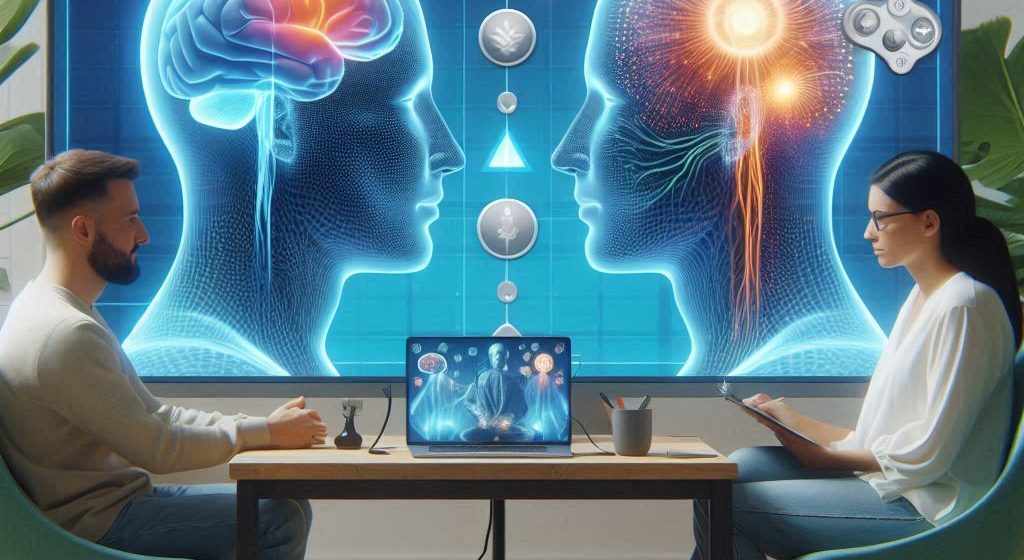Eye Movement Desensitization and Reprocessing (EMDR) therapy has long been recognized as an effective treatment for trauma, anxiety, and PTSD. Traditionally, EMDR therapists relied on in-person sessions, using tools like finger movements, light bars, or tactile pulsers to facilitate bilateral stimulation (BLS). However, with the increasing demand for teletherapy and digital mental health solutions, online EMDR tools have emerged as a valuable resource for clinicians.
In this article, we’ll explore:
- The benefits of using online EMDR tools
- Key features to look for in digital BLS tools
- Best practices for integrating online EMDR into therapy
- Potential challenges and how to address them
Why Online EMDR Tools?
The shift toward telehealth has made it essential for EMDR therapists to adapt their methods for virtual settings. Online EMDR tools provide several advantages:
1. Accessibility for Clients
Clients in remote areas or with mobility issues can now access EMDR therapy from home. This expands treatment opportunities for those who might otherwise struggle to attend in-person sessions.
2. Convenience & Flexibility
Therapists and clients can engage in EMDR sessions without geographical constraints. This is especially beneficial for clients who travel frequently or have unpredictable schedules.
3. Enhanced Engagement
Many digital EMDR platforms offer customizable BLS options—such as visual, auditory, or tactile stimuli—allowing therapists to tailor sessions to individual client preferences.
4. Cost-Effective Solutions
Instead of investing in expensive physical equipment (e.g., light bars, buzzers), therapists can use affordable online tools to facilitate BLS.
Key Features of Effective Online EMDR Tools
When choosing a digital EMDR tool, therapists should consider:
✔ Adjustable Speed & Direction – The ability to control the pace and movement of visual stimuli (e.g., left-right, diagonal, random).
✔ Multiple Stimulus Types – Options for visual (moving dots, shapes), auditory (alternating tones).
✔ User-Friendly Interface – Simple navigation for both therapist and client.
✔ Security & HIPAA Compliance – Ensuring client confidentiality in teletherapy sessions.
✔ Customizable Settings – The ability to adjust colors, sounds, and patterns to suit client comfort levels.
Best Practices for Using Online EMDR Tools
While digital EMDR tools offer flexibility, therapists should follow best practices to ensure effective and safe treatment:
1. Ensure Client Readiness
Not all clients are suited for online EMDR. Assess their stability, tech literacy, and home environment before beginning.
2. Test Technology in Advance
Conduct a trial run to ensure the client can see, hear, or feel the BLS stimuli properly.
3. Maintain Therapeutic Presence
Even in a virtual setting, therapists should guide clients through the process with the same level of engagement as in-person sessions.
4. Combine with Traditional EMDR Techniques
Online tools should complement—not replace—the therapeutic relationship and EMDR’s structured protocols.
Potential Challenges & Solutions
❌ Technical Issues – Lagging video, poor audio, or connectivity problems can disrupt sessions.
✅ Solution: Use a stable internet connection and have a backup plan (e.g., phone-based BLS).
❌ Client Distractions – Home environments may not always be conducive to therapy.
✅ Solution: Encourage clients to find a quiet, private space and use headphones if needed.
❌ Limited Physical Feedback – Therapists may miss subtle non-verbal cues in virtual sessions.
✅ Solution: Regularly check in with clients and adjust pacing as needed.
Final Thoughts
Online EMDR tools are transforming the way therapists deliver trauma treatment, making EMDR more accessible and adaptable than ever. By selecting the right tools and integrating them thoughtfully into practice, clinicians can provide effective, evidence-based care in both virtual and hybrid settings.




